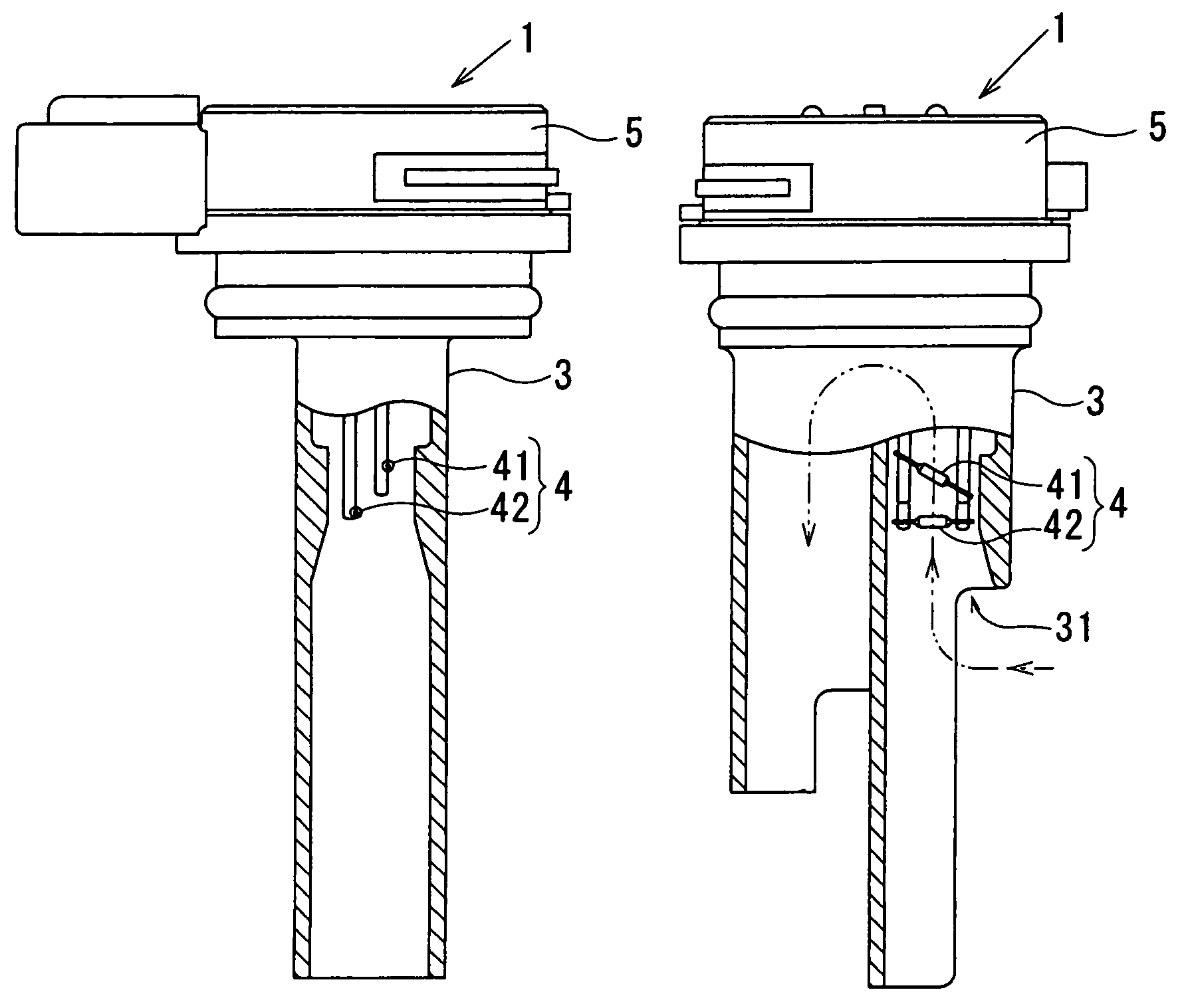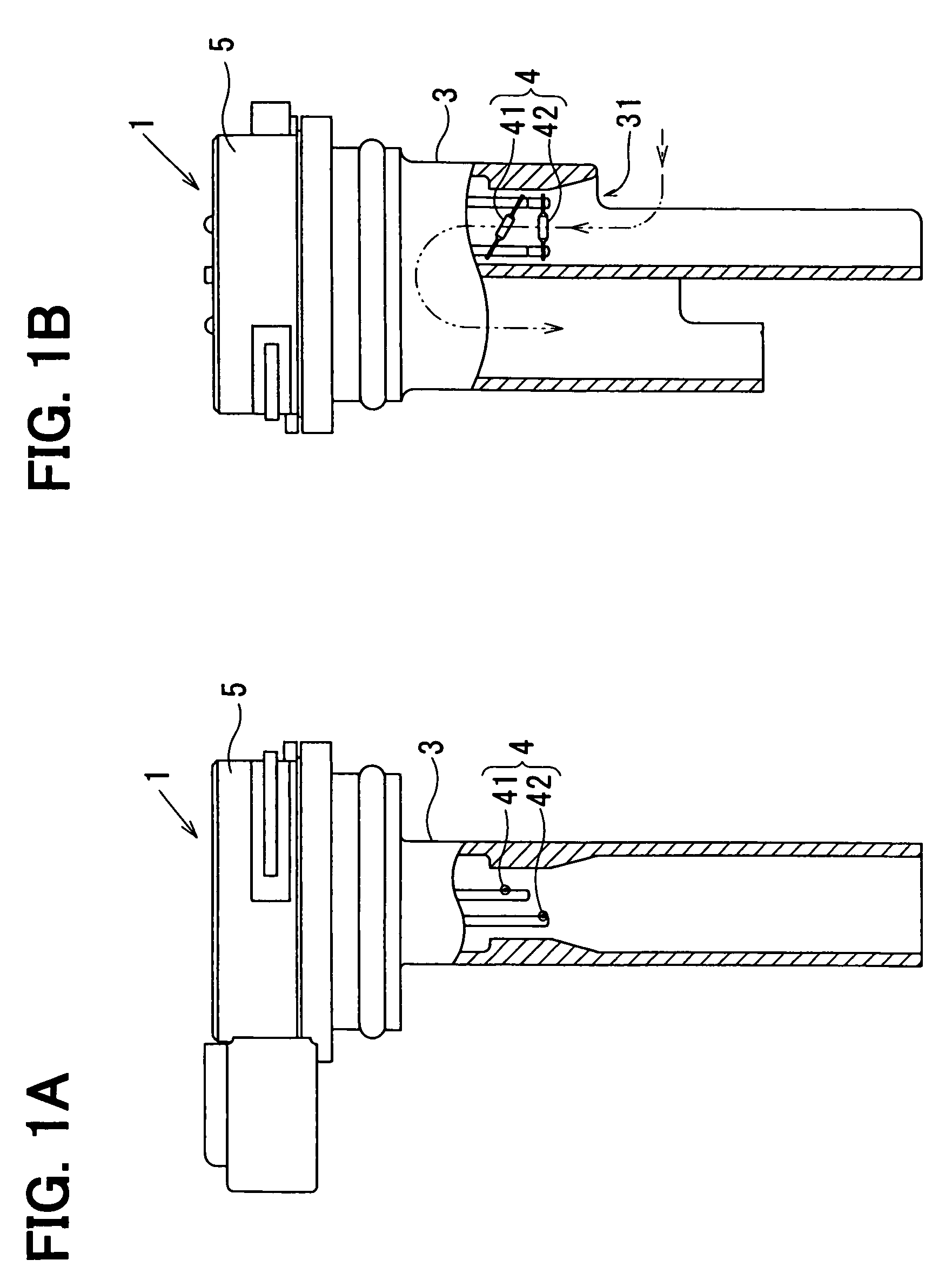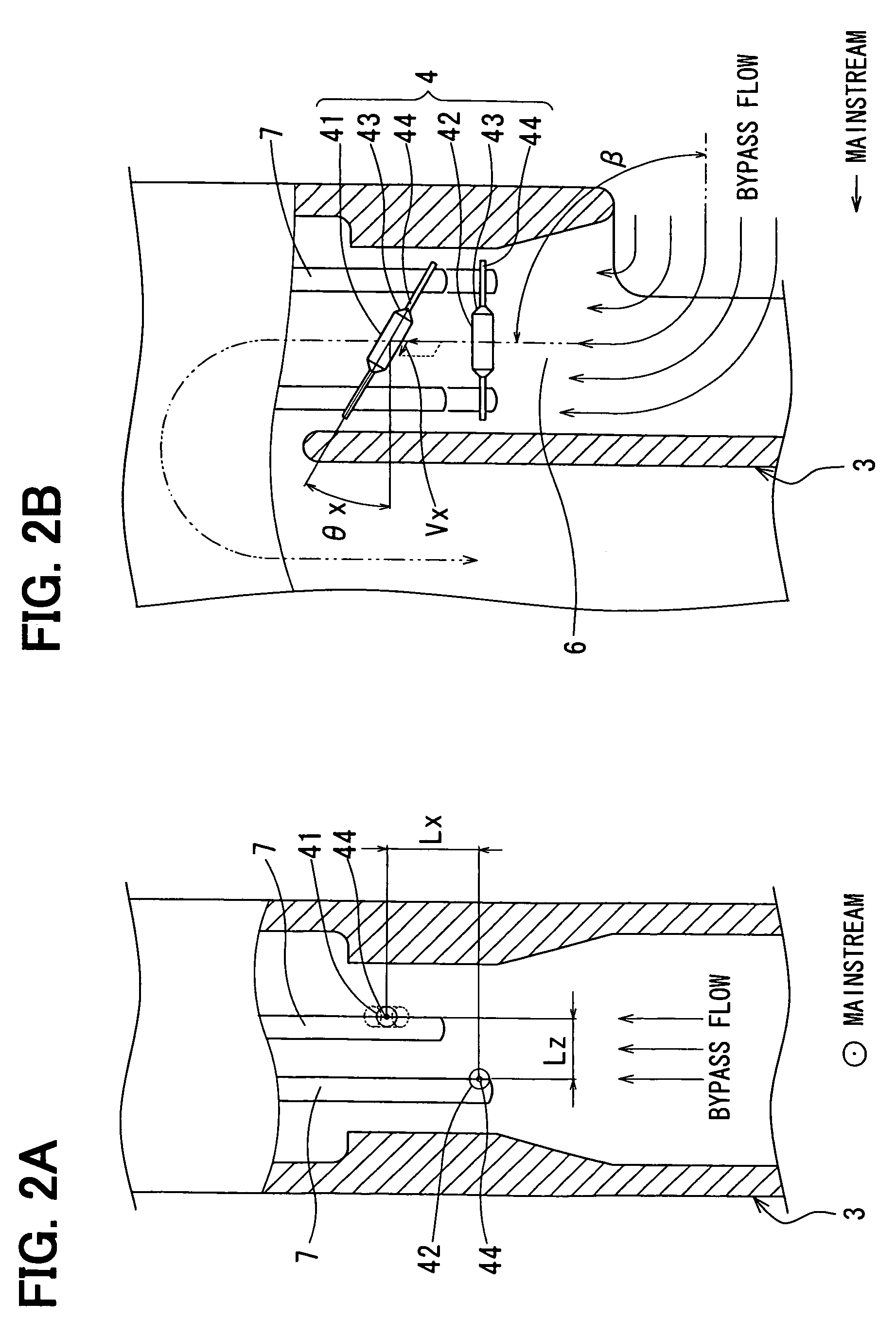Flow measuring device having heating resistor in inclined position with respect to the flow direction
a technology of flow measurement and heating resistor, which is applied in the direction of measurement devices, volume/mass flow measurement, instruments, etc., can solve the problems of inability to accurately detect airflow, and inability to absorb air. the effect of adhesion
- Summary
- Abstract
- Description
- Claims
- Application Information
AI Technical Summary
Benefits of technology
Problems solved by technology
Method used
Image
Examples
first embodiment
Operation of First Embodiment
[0054]Next, an operation of the airflow measuring device 1 is described.
[0055]The engine is started, whereby mainstream of air is generated in the intake pipe 2. A part of the mainstream as the bypass flow is deflected at substantially 90° to pass through the bypass passage 6 of the sensor body 3. Suspended particulates contained in air flowing through the intake pipe 2 include relatively heavy and large particulates such as carbon particulates. Such relatively heavy and large particulates are applied with large inertia, thereby being apt to be separated by the inertia separation effect and adhered to the foundation wall of the sensor body 3.
[0056]The mainstream is partially deflected at substantially 90° to form the bypass flow having the deflected flux therein defining a velocity distribution between the outer and inner streamlines. The streamlines defining the velocity distribution form the velocity component in the longitudinal direction of the heati...
embodiment
Effect of Embodiment
[0059]In the present embodiment, the airflow in the bypass passage is deflected at 90° with respect to the airflow in the main passage and bent perpendicularly to the direction, which is perpendicular to the airflow in the main passage. The sensing portion 4 includes the heating resistor 41 and the temperature-sensitive resistor 42, which are connected and supported by the pair of support members 7, which are erected in the bypass passage 6, via the pair of lead members 44. The heating resistor 41 and the temperature-sensitive resistor 42 are energized via the support members 7. The energization is controlled on the basis of heat radiation of the heating resistor 41 such that the temperature difference between the heating resistor 41 and the temperature-sensitive resistor 42 is maintained at the predetermined controlled temperature Ts. The sensing portion 4 for measuring the airflow in the bypass passage 6 is inclined by the predetermined inclination angle θx wit...
second embodiment
[0065]In the present embodiment, as shown in FIGS. 7A, 7B, each support member 7 has an end surface with respect to the longitudinal direction thereof, and the end surface is inclined at a predetermined inclination angle with respect to the streamline of the bypass flow. It suffices that at least one of the support member 7 has the inclined end surface as a slope. In the present structure, the end surface is capable of developing a boundary layer thereon to reduce stagnation, thereby suppressing adhesion of suspended particulates. Therefore, the boundary layer developed along each end surface of the support member 7 is also effective to reduce adhesion of suspended particulates in the connecting portion, in which the support member 7 is connected with the lead member 44 by, for example, welding. Further, adhesion of suspended particulates can be reduced on the surface along the longitudinal direction of each support member 7, similarly to the first embodiment.
[0066]Here, the predete...
PUM
 Login to View More
Login to View More Abstract
Description
Claims
Application Information
 Login to View More
Login to View More - R&D
- Intellectual Property
- Life Sciences
- Materials
- Tech Scout
- Unparalleled Data Quality
- Higher Quality Content
- 60% Fewer Hallucinations
Browse by: Latest US Patents, China's latest patents, Technical Efficacy Thesaurus, Application Domain, Technology Topic, Popular Technical Reports.
© 2025 PatSnap. All rights reserved.Legal|Privacy policy|Modern Slavery Act Transparency Statement|Sitemap|About US| Contact US: help@patsnap.com



